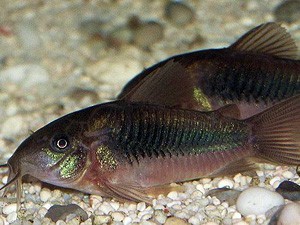This is a guide and explains about the nitrogen cycle process to ensure that your betta fish and the fish mates will thrive and enjoy maximum life expectancy.
Let us begin and explain why the need for the Nitrogen fish tank cycling.

An aquarium where it is a closed environment unlike the lakes, ponds and ocean open ecosystem.

Fishes excrete waste and defecate inside an aquarium. An over a short time this waste will turn into harmful ammonia which is very toxic to fishes either in the open ecosystem or in a closed environment such as a fish tank.
In order for the fish to survive then you have to keep on changing 100% water changes inside the aquarium which is very time-consuming and almost impossible to keep up on our daily busy lives.

In nature, nitrification occurs in which there are beneficial bacteria in the open ecosystems where they can consume the ammonia which is very toxic to fishes. The good bacteria in the open lakes, ponds, and ocean makes the water conditions safe for the aquatic life to thrive and maximum good water conditions.
In a fish tank close environment, we have to encourage this good bacteria and monitor it so that the water conditions will be safe for the fish especially in a fish tank aquarium.

If you do not do any nitrogen cycle then most of the fish that you introduce to the fish tank will eventually die because of toxic ammonia, unless if your system is an aqua phonics aquarium where the plant will take care of the ammonia for you.
Old School Method
Normally the old school aquarists put some fish feeders such as small guppies. And of course, the guppies will eventually die because of the ammonia build-up.
Since the guppies are found everywhere and relatively cost pennies, it is used for the Nitrogen cycle and sacrifice it in order to establish bacteria in the filter and gravel to have the proper water conditions.
Old School Method Explanation
When you have the guppies in the fish tank, you begin by feeding them fish food. After a few days, the fish will excrete and there will be ammonia build up in the water.
When the waste breaks down in the fish tank it will lead into ammonia.
On the other hand, there are small nitrifying bacteria which are called Nitrosomonas living in the decor, filter and gravel substrate.

These bacteria will consume the ammonia from the waste produced by the feeder fish or disposable fish as some may call it.
As long as there is ammonia the bacteria will reproduce and the Nitrosomonas will increase in numbers.
Nitrosomonas will eventually catch up to the ammonia.
In this scenario, which is around 1 to 2 weeks the ammonia levels would be dangerously high while the Nitrosomonas are catching up.
The ammonia level will high to a point and eventually, it will level off as the bacteria is consuming it.
Of course, Nitrosomonas are bacteria and they will also produce toxic waste which is also detrimental to the fish. The waste excreted is called nitrite.
So nitrite is also very toxic to fish and at some point, some guppies will die after surviving with the toxic ammonia.
Thanks to nature that there are other bacteria called Nitrospira.
Nitrospira consumes nitrite the waste of Nitrosomonas.
You would ask also that the Nitrospira gives of waste and it is called Nitrate.
Nitrate is actually not harmful to fish in small doses.
But if the nitrate levels spike and reach to high levels then it will be toxic for the fish too.
In order to control the nitrate levels then you have to do a partial 25% partial water changes every week with clean tap water.
But if your system is aqua phonics aquarium type then you can get away without doing 25% water changes, you just need to top up the water every week or even every month!
The plants consume nitrogen compounds: ammonia and nitrite. Plants actually need these for building blocks for organic molecules. The best setup is aqua phonics where the plant roots are exposed to the fish tank aquarium.
Fishless Method
This fishless method is a new way now when you are cycling the fish tank.
This is a more humane way of treatment on fishes, even thou it is just a feeder fish or guppy.
This method exactly works the same way as the old school method it is just instead of putting a live fish in the tank, you put ammonia.
You cut the cycling time by 1 week since you do not need to wait for the fish waste.
Ammonia hydroxide is used for this water cycling.
I will provide information about where to buy the ammonia hydroxide.
If not then you can simply buy the ammonia hydroxide which is available at your local convenience grocery store.
Materials Needed For Succesful Water Cycling
Ammonia
Eye Dropper or Medicine Dropper
Ammonia Test Kit
Nitrite Test Kit
Nitrate Test Kit
PH Test Kit
Water Conditioner
Actual In-Depth Explanation In Nitrogen Water Cycling
1. If you go to your favorite grocery store to buy the ammonia hydroxide. You have to make sure that there is no presence of suds. If there are suds there will be detergents.
Never use the ammonia if there are detergents or else everything will die immediately.
Just make sure that it is just water and ammonia hydroxide.
Better yet just go to a pet store and buy the ammonia for water cycling.
2. There is no guide on how much ammonia you will add to water. Since all ammonia from the grocery stores is different. The rule of thumb is to add around 3 to 5 drops per gallon of water.
You mix it thoroughly and test it with the ammonia test kit.
You have to add ammonia until you get a reading of 2.0 ppm level, if you are slightly over that then it is fine.
3. Every day you have to add drops of ammonia until you get a consistent reading of 2.0ppm.
You can begin to test: ammonia, nitrite, and nitrate every day.
Also, checks the PH level of the water. If there is a drastic spike or drop in PH then the good bacteria will die.
Normally it will be around 1 to 2 weeks that the beneficial bacteria will be plentiful. They will be enough to break down the ammonia it that point in time.
As I mentioned that these good bacteria waste product is Nitrite. So if your testing shows then your water cycling is already in the normal process.
4. If your nitrate levels are beginning to increase, stop adding ammonia so that the good bacteria will be in equilibrium with the ammonia.
The second good bacterial will be consuming nitrite and their waste will be nitrate which is not harmful to the fish anymore.
5. Nitrite levels will drop which should be around 3 to 4 weeks.
6. To completely know that your fish tank is fully cycled, the findings should be: ammonia zero, nitrite zero and only nitrate is around then the fish tank is completely cycled!
Hooray!

It time to add your chosen betta fish
Maintenance is just 25% water changes every week.
If you are going to add a fish in the tank then you have to gradually introduce it. 1 to 2 fishes every week.
If your tank is mainly a betta fish then just add a Cory.


